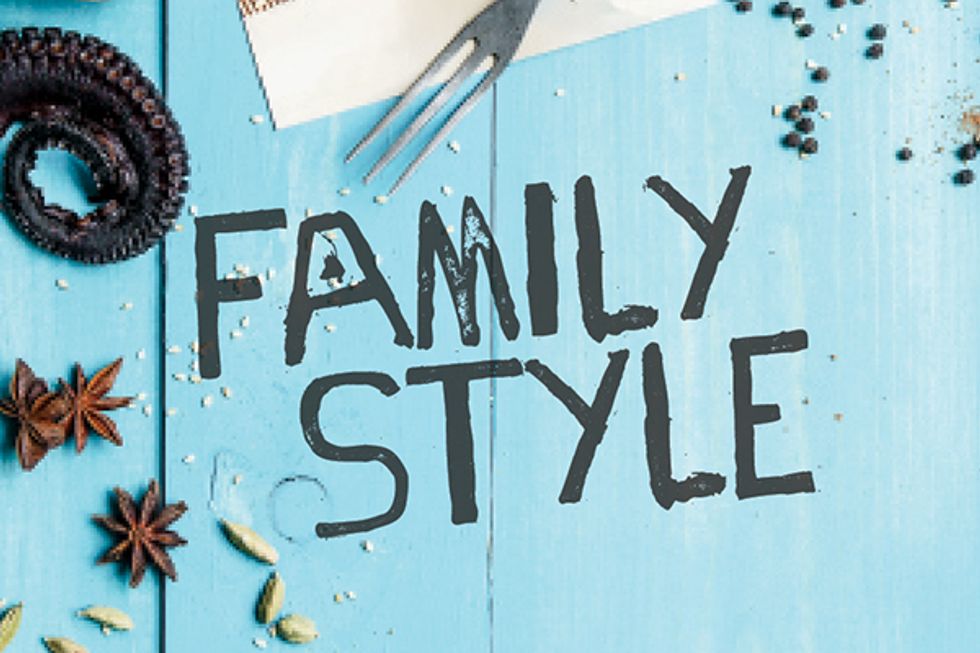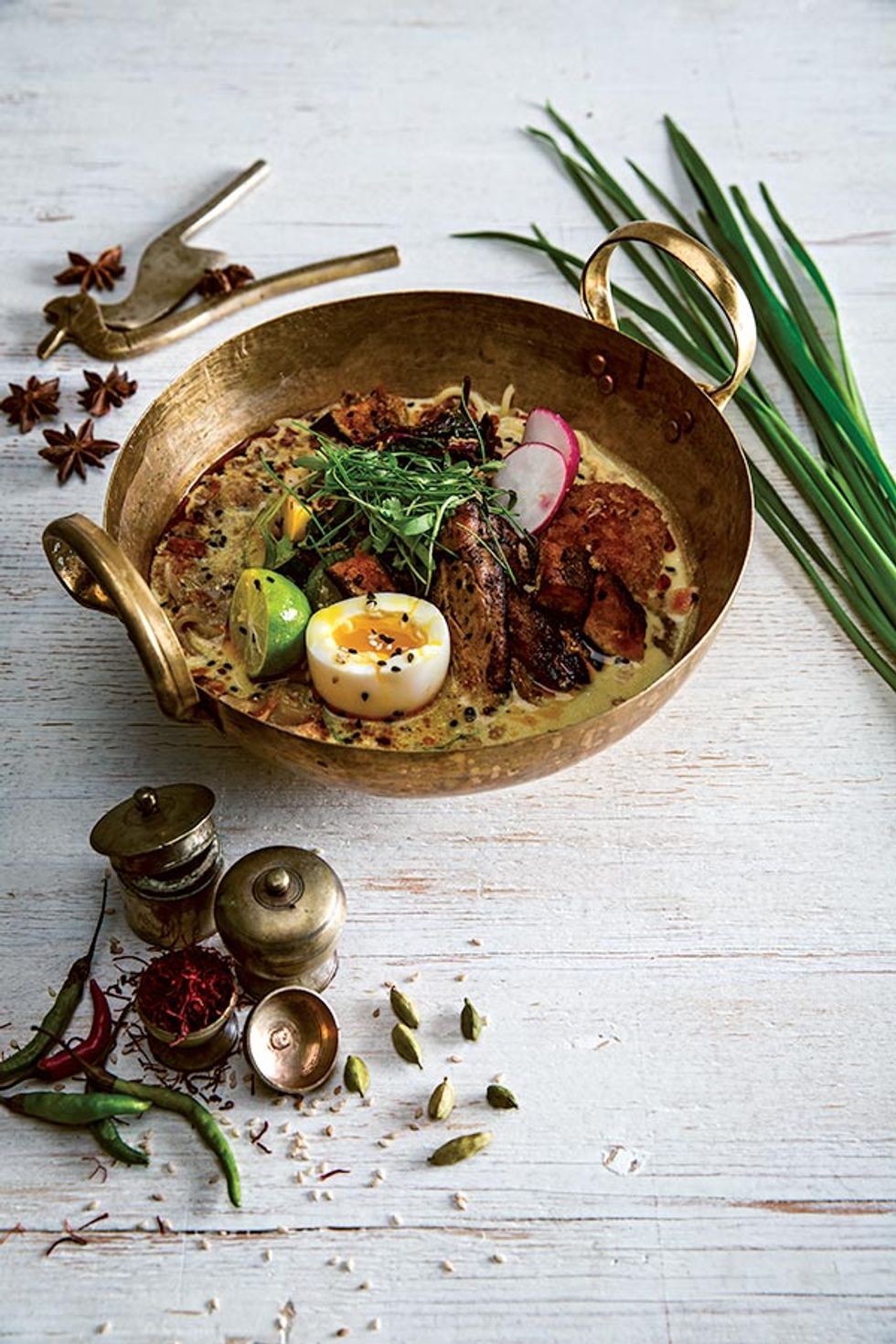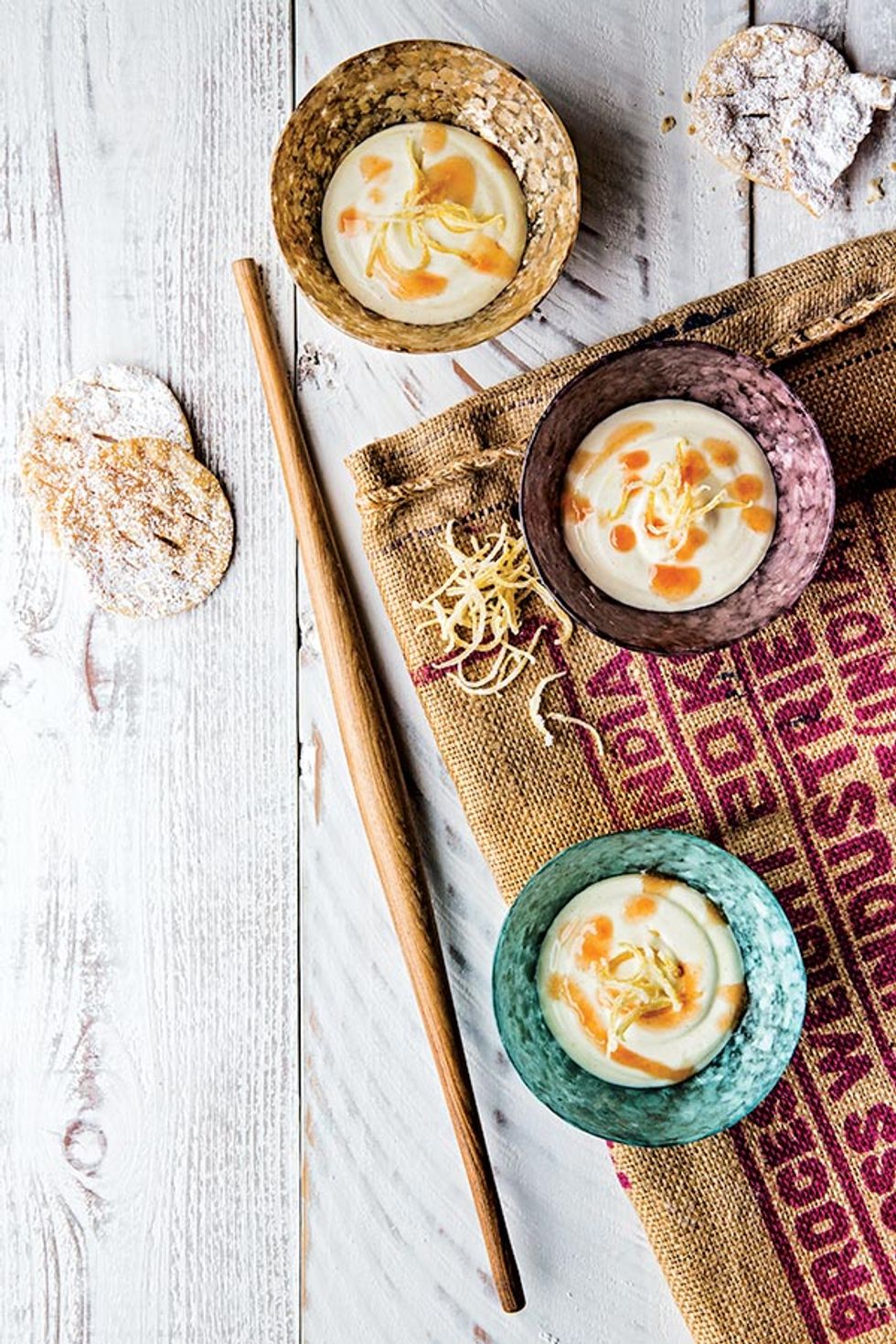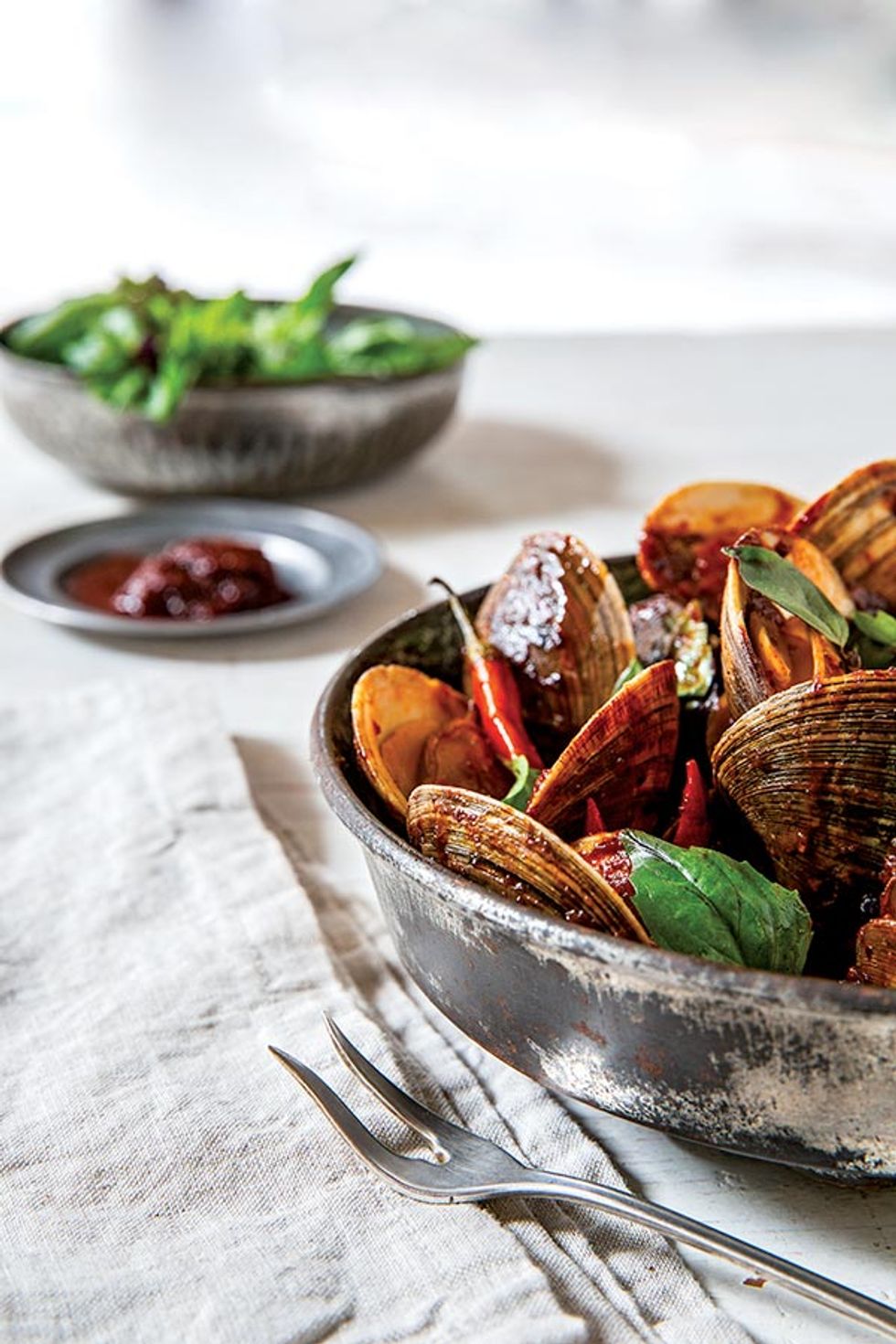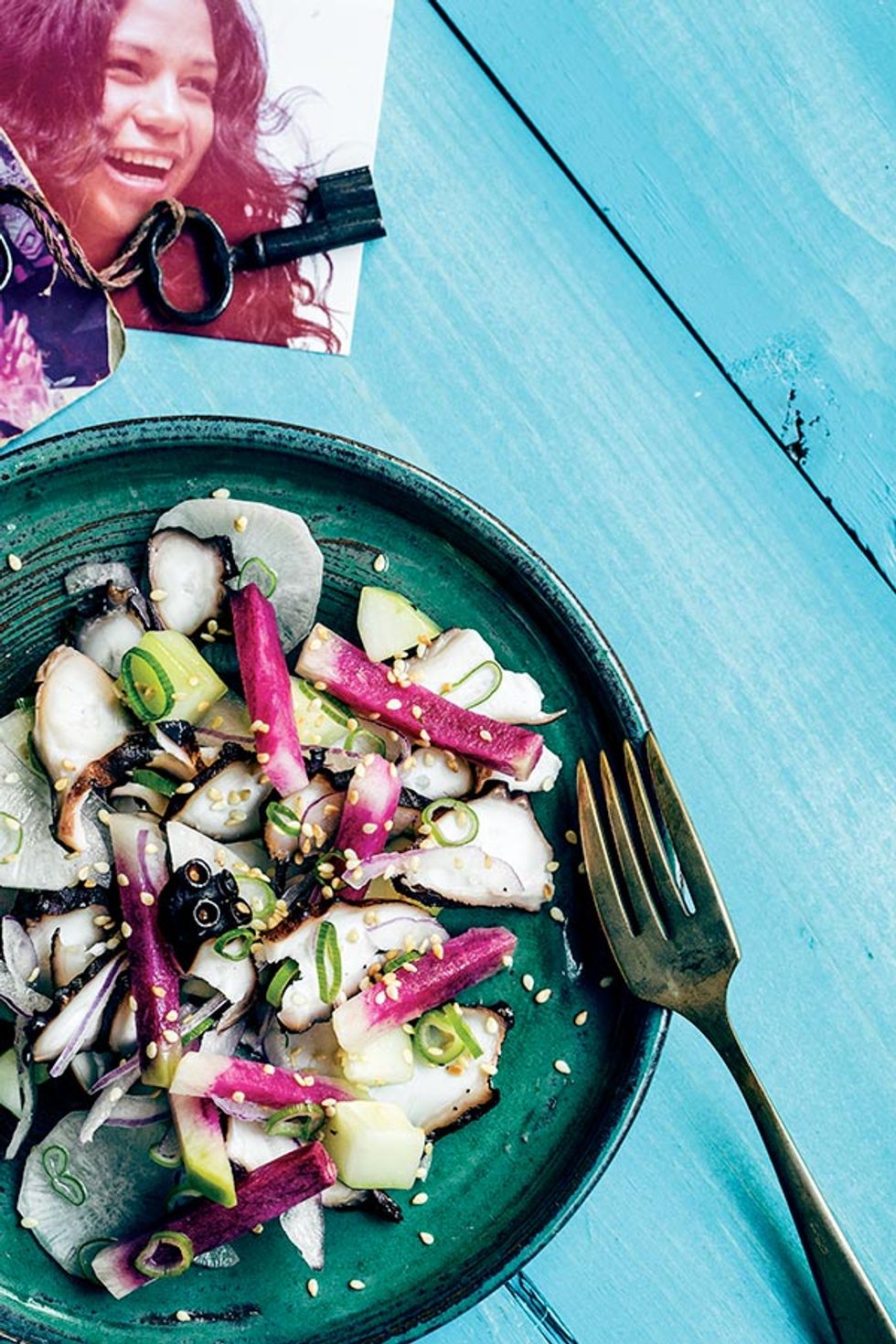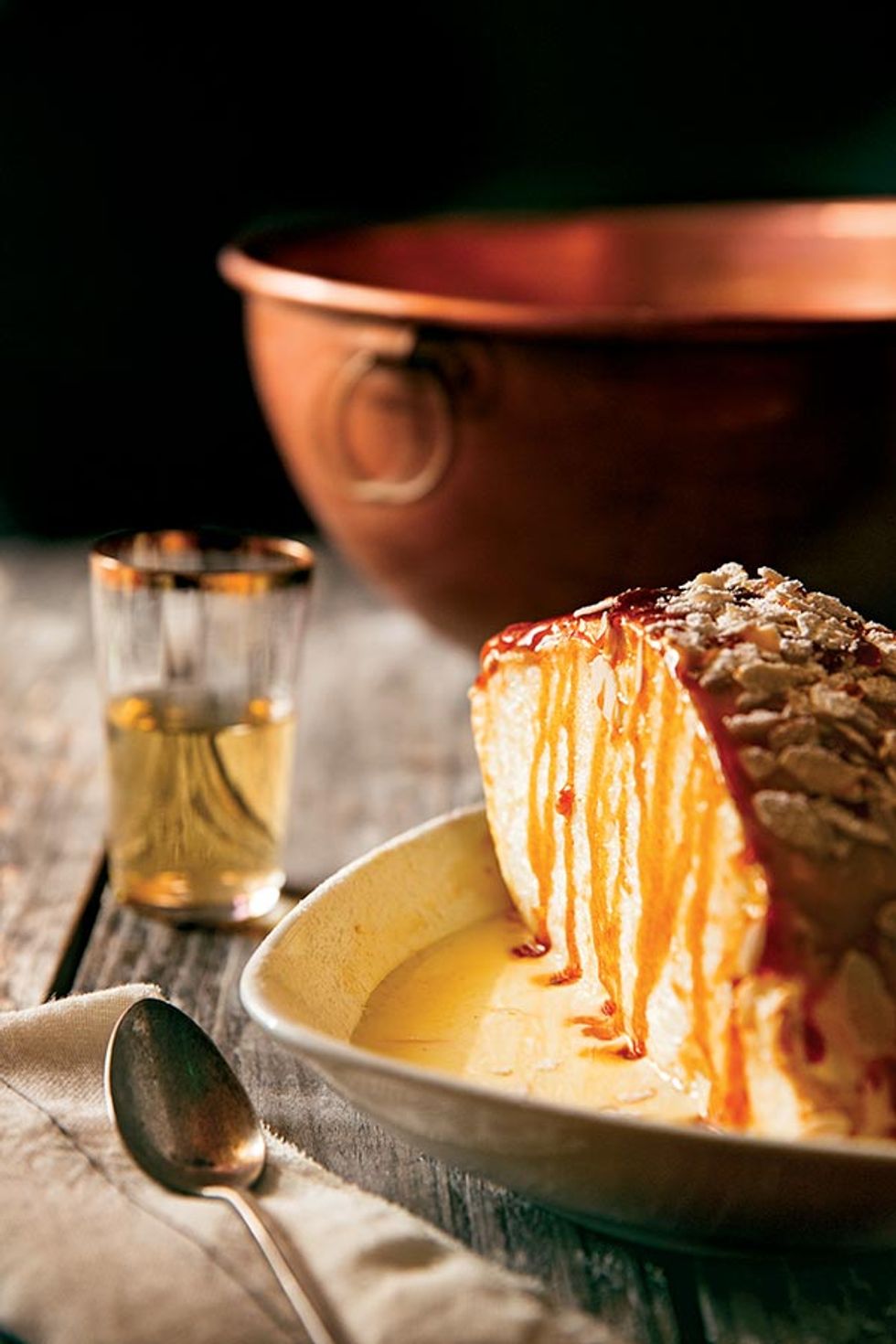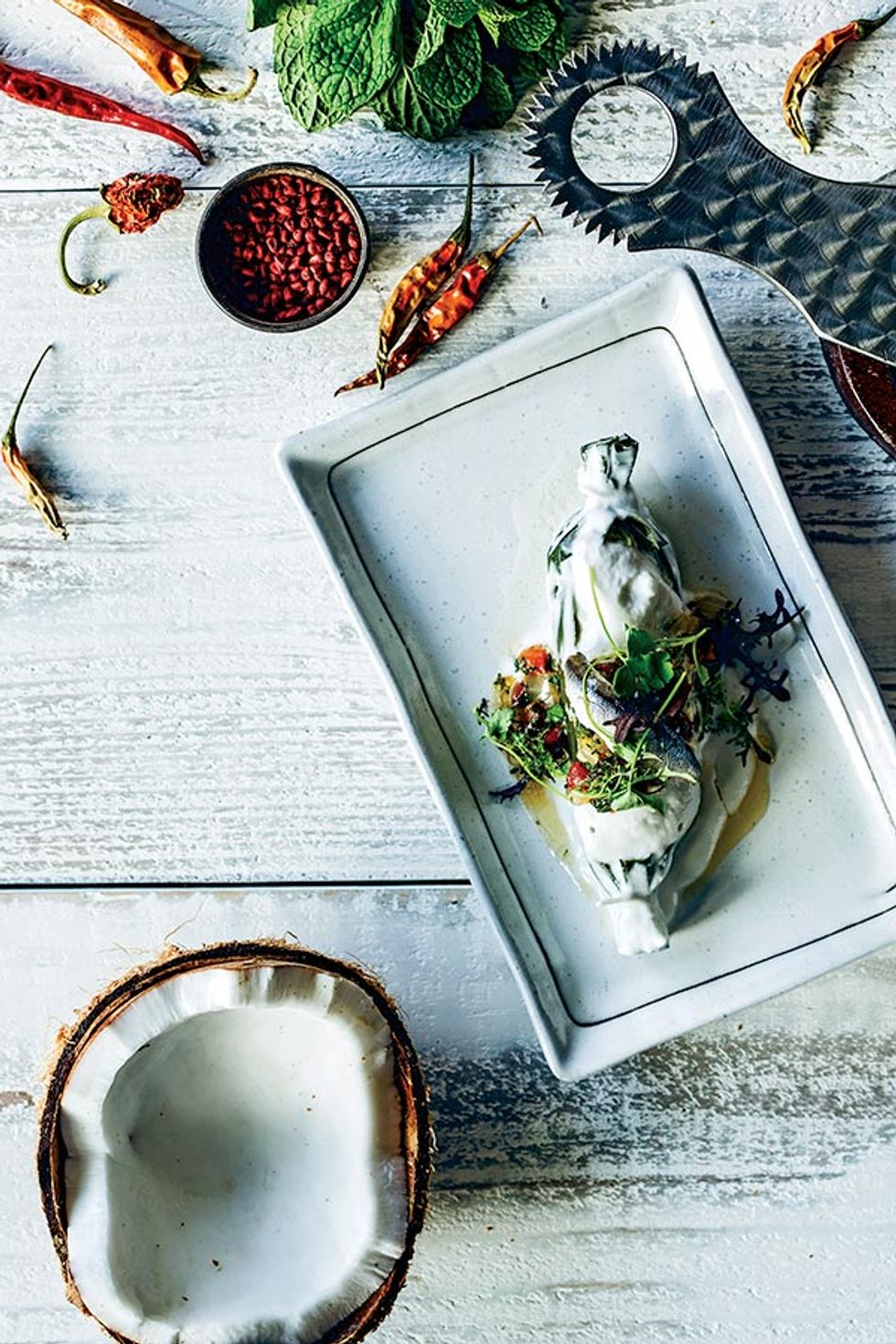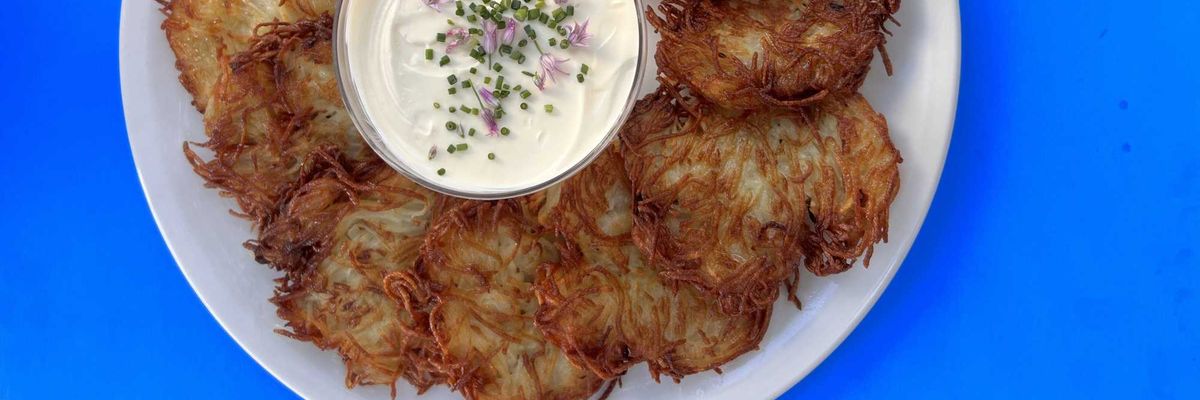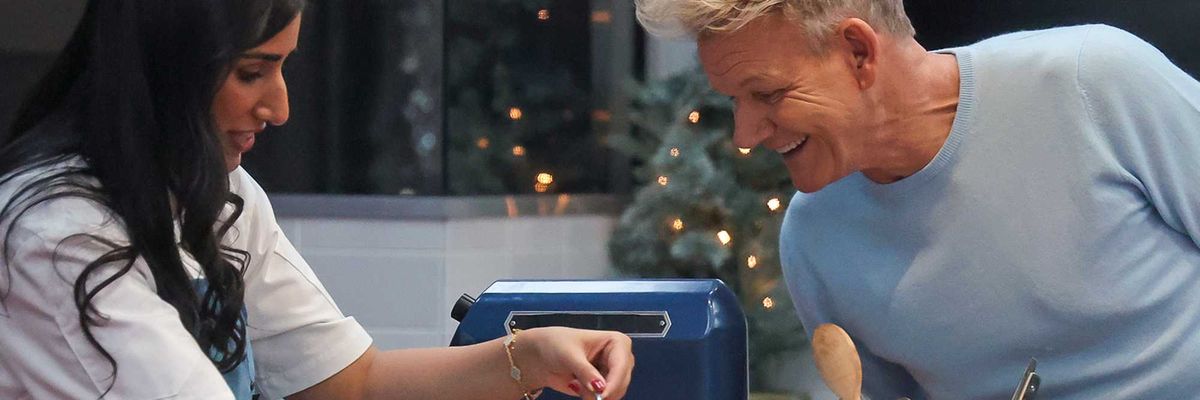Drawing from their unique cultural traditions and heritages, chefs are brewing a melting pot of flavors that come from the heart and home.
Malaysian Times
Azalina Eusope grew up in a family of street food vendors on the tiny Malaysian island of Penang. When the mother of two moved to the Bay Area in 2001, the culture shock was overwhelming: “I was so far removed from my family, and I didn’t speak English very well,” she says. Faced with the choice of returning home to a caste system with limited opportunities or making it work in San Francisco, she bit the bullet and opened a booth at the Alemany farmers market, where she sold curry crepes. Four years later, Eusope’s brand Azalina’s (Civic Center) has 14 products at Whole Foods—her coconut jam (“kaya”) is the Malaysian equivalent of dulce de leche—a restaurant at Twitter HQ, and two more restaurants coming later this year. Her mamak laksa (mamak refers to her Indian-Malay heritage) is an explosion of flavors on a bed of spiced noodles—a specialty she learned from her father, a famous noodle-maker. “Every single thing I do is a tribute to the four generations before me. I cook what reminds me of the best things in my childhood.”
South American Express
Never mind the fancy restaurant pedigree of Manny Torres Gimenez, who’s cooked in the kitchens of Quince, Coi, and SPQR. It is his grandmother’s methods, which he observed as the cook’s errand boy, that he’s adopted at his freshman restaurant, The Palace (Mission). His abuela had a special knack for eyeballing measurements (“She called it ‘eye percent,’”) a skill he practices today. Gimenez combines his Venezuelan heritage with Italian training in his plantain chitarra noodles carbonara—with homemade chorizo atop plantains, which are baked until they’re practically bursting and combined with whole eggs and flour to be rolled out in sheets and cut with a chitarra. “It’s got that Venezuelan umami—a combination of burn, sweet, and salty. Every dish I love has elements of those flavors.”
Passage to India
The youngest of three daughters, Preeti Mistry was always the one looking to get out of helping in the kitchen—her mother cooked dinner most nights from scratch. How things have changed. “I missed that as soon as I moved away from home,” says Mistry, who, after culinary school, famously did a stint on Top Chef before opening Juhu Beach Club (Oakland), the Temescal eatery where she now cooks some of her mother’s Indian recipes (from the Gujarat region). Mistry is matching her mom’s efficiency with the belan, a skinny tapered rolling pin used to make soft puris, a flatbread-like roti spiced with turmeric and chili, which she serves atop shrikhand. The sweetened strained yogurt, saved for special occasions and religious holidays in Mistry’s family, will be served with Meyer lemon zest and chai spices next month to celebrate JBC’s two-year anniversary.
Bangkok Bound
“I didn’t know how to cook at all when I lived in Thailand,” admits Bangkok native Pim Techamuanvivit, who was not impressed by the American Thai cuisine she found upon moving here for college in the early ’90s. Craving the flavors of home, she spent countless hours learning the recipes of her childhood over the phone and during trips back to Thailand. The owner of the one-year-old Kin Khao (Tenderloin), she is doing her family’s culinary tradition proud in a signature dish: chili jam clams. In Bangkok, her family was well-known for her grandmother’s chili jam—“It was a huge production…my aunts chopping garlic and shallots and prepping,” she recalls. “I smuggled two giant jars of it back in my suitcase.” The versatile condiment now appears at Kin Khao in salads and soups, but most profoundly as a sauce for clams accompanied by Thai basil. “When I learned how to make that dish, I thought of myself as a proper cook,” says Techamuanvivit.
Hawaiian Style
Ravi Kapur hesitates to label his cuisine—and his heritage. “There’s not necessarily a simple answer,” he says, pointing to those check-the-box forms inquiring about race—“…white, African American, whatever….I always check Asian Pacific Islander, but that only came about recently,” he says. “Before that, I was ‘Other.’” The Oahu-born chef, who has flavors of Hawaii, China, and India all in his DNA, crafts the menu at Liholiho Yacht Club (TenderNob) around a melting pot of cultures, making for dishes you won’t likely see elsewhere. Take his smoked tako (octopus), for example: Kapur cooks the creature, which is usually boiled or braised, entirely by smoke—a custom common at luaus. “You know you’re at a good party when you have smoked tako,” says Kapur, who serves it with a technicolor chop of daikon radish, lightly blanched turnips, cucumber, watermelon radish, and red onion. “The ocean provides so much,” he says. “It’s shaped my perspective of cooking—and my life in general.”
French Connection
Hospitality runs in the blood of Laurent Manrique, who, as a boy, worked alongside his mother and aunt in his grandmother’s inn and cafe in the French town of Roques. “I grew up in the kitchen,” he says. “I was involved in the product, the cuisine of the countryside.” Now a serial restaurateur, Manrique has made his mark on SF’s French culinary scene, first at Aqua, then at Cafe de la Presse and more. With his newest venture, Aquitaine (FiDi), he wanted to share the flavors of his native Gascony. “All of these dishes were made when I was a kid, in my family, by great women,” he says of the menu. There, he uses his grandmother’s method and copper bowl, called a blanc, to create the Iles Flottantes, a classic “floating island” dessert of meringue baked with caramel. The egg whites react to the blanc while caramel seeps into the cake, which is then flipped upside down and served with crème anglaise, almonds, and caramel drizzle. Given to him by his grandmother before she passed, the blanc is as essential as the ingredients. With more than a dollop of nostalgia, he adds, “I can only make this dish with this bowl.”
Return to Guam
Guam may be a U.S. territory, but considering its location—closer to Papua New Guinea than Hawaii—you’ve probably never experienced much of its culture. Shawn Naputi (formerly of Salumeria, Foreign Cinema, and Incanto) is working to change that with Prubechu (Mission), our city’s first Chamorro restaurant. In the former Roxy’s Cafe, Prubechu employs a mostly Chamorro staff, plays traditional music, and serves dishes inspired by his homeland, including the signature motsiyas (pronounced “mot-see-jas”). A chicken forcemeat, similar to sausage, it’s made with pepper leaf, mint, and lemon, wrapped in a banana leaf and steamed in coconut milk. Naputi grinds coconut (a staple in Chamorro cuisine) on his family’s kamyo (pronounced “kamzu”), folds the milk into the sausage, then reduces some into a curd to use as sauce on top—labor intensive, to say the least. “It reminds me of how much work she put into it,” Naputi says of his grandmother’s time-consuming signature dish, which was normally reserved for holidays. “I wanted to embrace that.”
This article was published in 7x7's February 2015 issue. Click here to subscribe.



